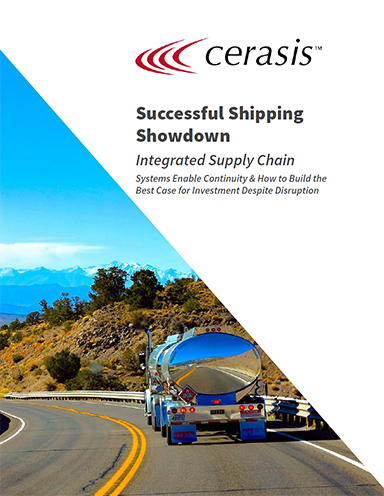Building the Business Case for Integrated Supply Chain Systems
This educational and informative white paper details how to deploy a usable, flexible, and adaptable transportation management system, or TMS, and how an organization can build the right business case.
Supply Chain Challenges
At the close of 2019, Jennifer Van Cise via Industry Week reported on the steep challenges faced in manufacturing and downstream supply chains.
New challenges arise daily, and even as companies look to squeeze efficiency from all processes, a lack of visibility remains a major problem.
In fact, 84% of chief supply chain offers note the lack of visibility as their biggest challenge, but why?
The answer is simple and comes down to disparate systems and poorly integrated supply chain planning.
Unfortunately, finding the weaknesses in the supply chain remains a daunting task, especially for those with limited visibility.
It’s a dark place for the modern supply chain, and moreover, the threat of disruptions is higher than ever.
In fact, the COVID-19 disruption is upending all standards and making businesses rethink their fulfillment models.
This comes in stride with a severe economic downturn, so more companies turn to the power of a transportation management system (TMS).
Yet again, finding a simple TMS is not enough to overcome those disruptions.
What happens when companies are faced with the sudden need to increase supply chain responsiveness and find a more efficient means of operations?
The solution is simple; deploy a usable, flexible, and adaptable TMS. Of course, it all depends on whether an organization can build the right business case for TMS use. To that end, this white paper will dive further into the benefits of a TMS, including:
- The means in which an integrated planning process reaps the rewards of TMS deployment
- Why SaaS-based solutions are the new standard for meeting the challenges of rising e-commerce and “contactless” delivery options
- How to put together a business case that maintains its appeal despite the disruption and economic instability
- The state of the freight market as it relates to uncertainty
- The Defense Production Act (DPA) and its impact on shippers
- Spot freight turmoil and how to keep rates under control
- The LTL market effects and how to prevent them from destroying your operation
- The value of freight consolidation in navigating risk
- How a data-driven transportation management system (TMS) promotes ongoing business success
What’s Related




Favorites





